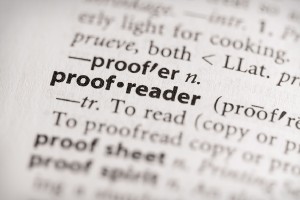Proofreading

The human mind is a funny thing………
For example, when we proofread and edit our own writing, we tend to read it as we think it should be, which means we misread our own typos, spelling, grammar, and punctuation mistakes.
Proofreading Tips
Here are some proofreading and editing tips that you can put into practice.
- Proofread and edit every single piece of writing.
- Understand the difference between proofreading and editing. Edit first by making revisions to the content and language. Then proofread to check for proper grammar, spelling, and punctuation.
- Step away from a piece of writing before you proofread it. The longer the piece, the longer you should wait to proofread it.
- Read your work aloud. Pronounce each word slowly and clearly as you read and check for mistakes.
- Proofreading should never be a rush job. Do it slowly.
- Don’t review your work once and then send it out into the world. I recommend editing until the piece reads smoothly and proofreading three times or more.
- At the very least, proofread until you don’t catch any more errors.
- Read the piece backwards so you can see each word separately and out of context.
- Look up the spelling of proper names as well as scientific and technical terms that you’re not familiar with to make sure you’re spelling them correctly.
- Don’t make any assumptions. If you’re not sure about something, look it up so you can fix a mistake (if there is one) and learn the correct way.
- Don’t forget to proofread titles, headlines, and footnotes.
- Proofread when you’re fresh and wide awake. Proofreading is not done well when you’re tired or distracted.
- Proofreading and editing can be tedious, so break up your revision sessions by doing other tasks that help you clear your mind.

